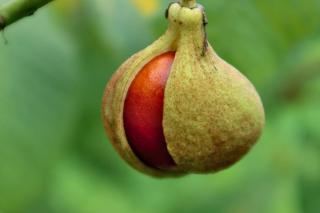

Bottlebrush buckeye is a shrubby tree that spreads more than it grows tall. It’s a relative of the chestnut tree and has the same leaves.
Name – Aesculus parviflora
Family – Sapindaceae
Type – shrub
Height – 6 ½ feet (2 meters)
Exposure – full sun or part sun
Soil – ordinary, well drained
Foliage – deciduous
Flowering – June to August
Preferably in fall.
Follow our advice on planting shrubs.
It isn’t necessary to prune it.
To reduce the size of the shrub or to balance growth, operate in spring.

It thus makes for easy growing and care and will fit just as well in a shrub bed as it will as a standalone.
If in a shrub bed, do provide for sufficient space because once mature it can grow wider across than 25 feet (8 meters)!
Unlike chestnut, bottlebrush buckeye fruits are only edible after special treatments: roasting, then slicing, and finally soaking in running water for days on end. It contains high levels of saponin, a poisonous compound that must be washed out from the dried, powdered or sliced material. Since this treatment also removes other nutrients, it isn’t much worth the effort.
Read also:
To avoid it growing too large, eliminate suckers and new shoots as they appear.